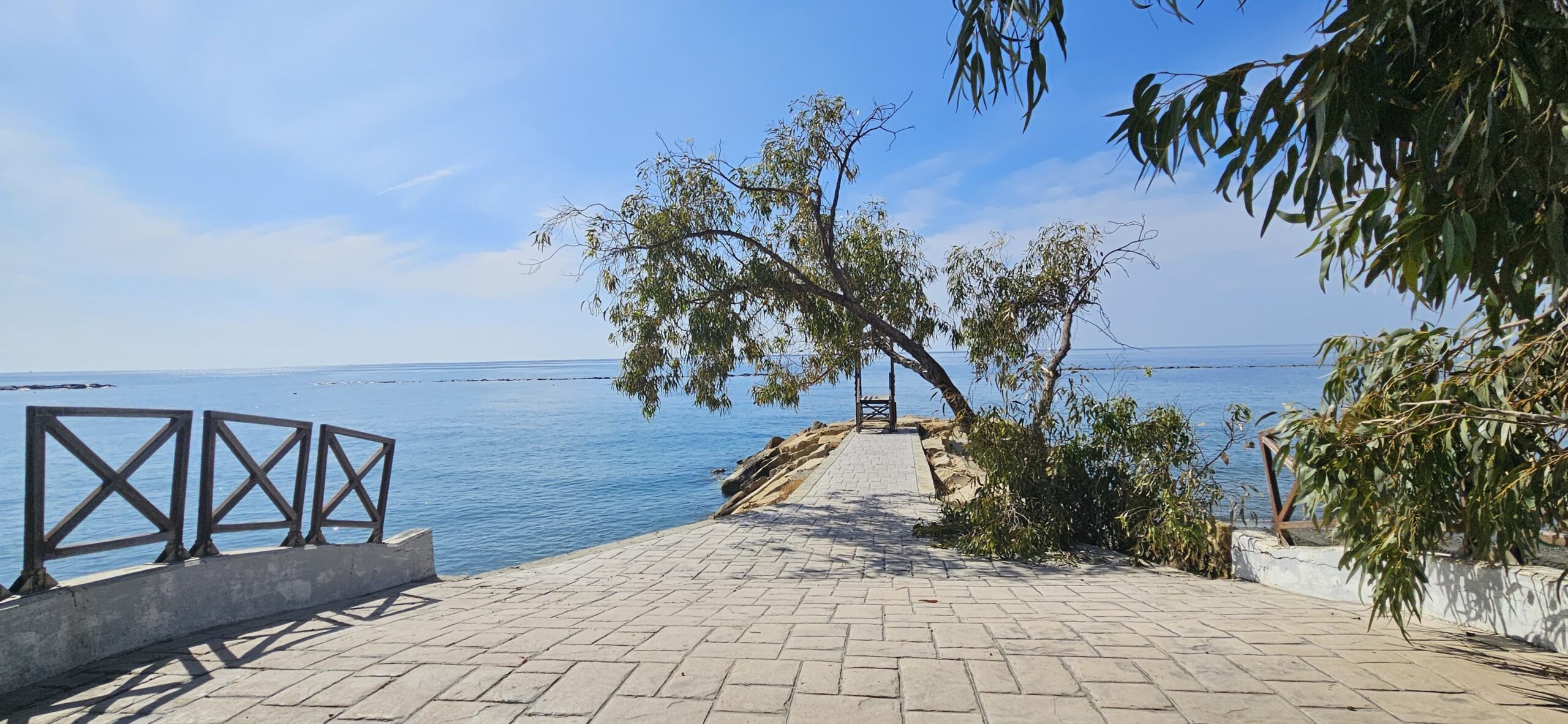

Sightseeing spot of a summer resort in Limassol with visible big jetters in the water that break the sea waves and the abundant planted flora, mainly comprised by allochthonous species such as eucalyptus.
During the week of 7 April, the 5th Mediterranean Plant Conservation Congress was held in Limassol, Cyprus.
Throughout the week, the topics of in-situ and ex-situ conservation, restoration, management, diversity, dissemination and citizen science of different Mediterranean countries were put together and discussed.
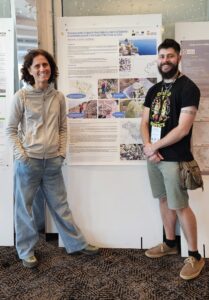
Maria Guirado (Diputació de Girona) and Edgard Mestre (project technician) in front of the poster on biological control of the prickly pear.
On behalf of the LIFE project, we presented a poster on the management with biological control of the Prickly pear (Opuntia ficus-indica) with the cochineal mealybug (Dactylopius opuntiae), which has been monitored by the Provincial Council of Girona in different sites of the Costa Brava. Several researchers received it very well as a control measure, especially in eastern Mediterranean countries where the mealybug has not reached. Many of those interested were indeed surprised by this method as it was not known by them.
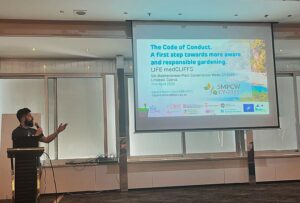
Edgard Mestre (tLIFE project technician) presenting the Code of Conduct and the iniciative “Planta’n una altra!” during the environmental education and enhancement of environmental awareness.
There was also an oral presentation of the results of preventive measures in the LIFE project that have been developed especially at the end of 2024. The Code of Conduct was explained as a communication and awareness-raising tool on the problem of invasive ornamental plants in our territory. It also included the initiative ‘Planta’n una altra!’ as a different preventive tool that offers solutions to the threat of this invasive flora. After the presentation, several booklets of the code were handed out to representatives of different projects and institutions.
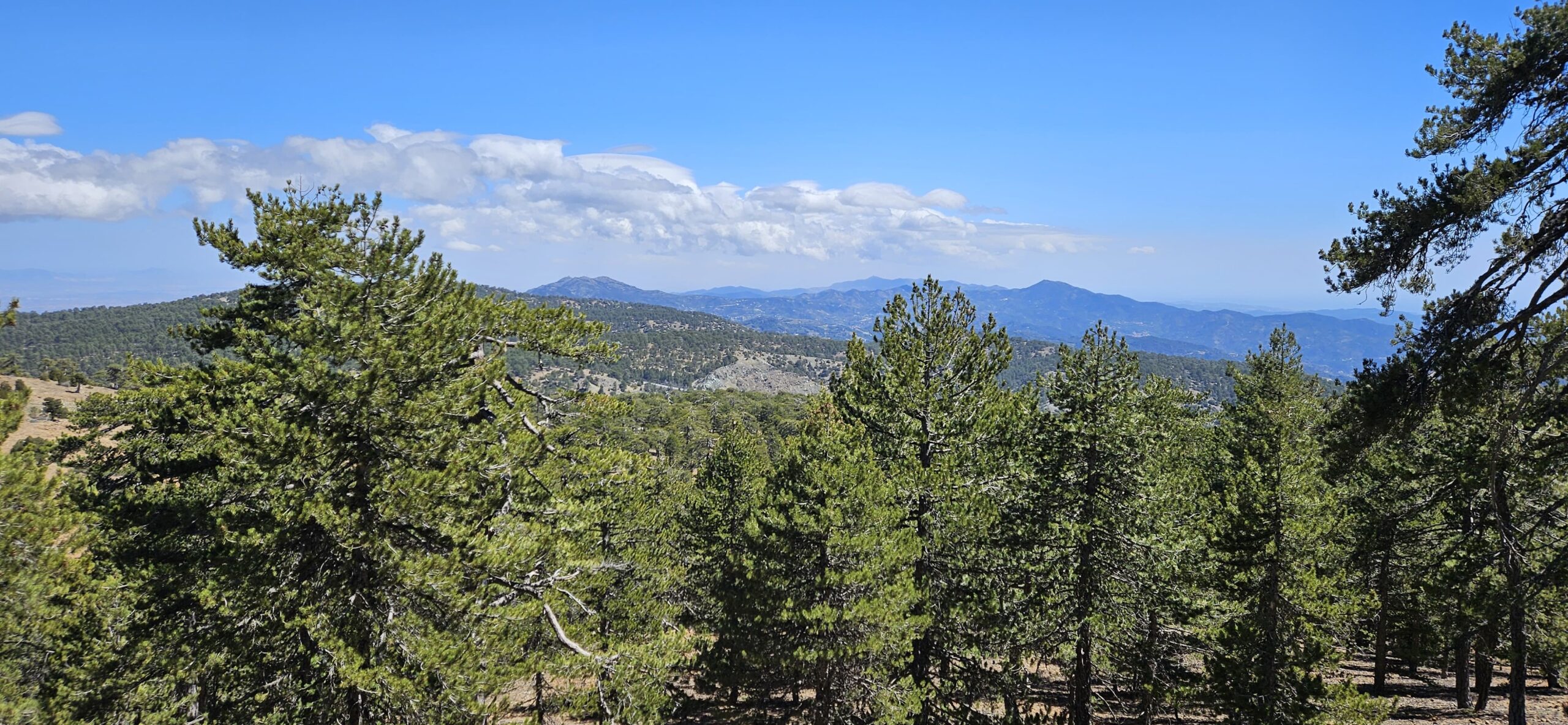
Landscape from the Artemir trail in the Troodos Forest National Park.
The congress included a field trip to different sites fo the Troodos Forest National Park. We discovered different unspoilt environments, from humid gorges to conifer forests at the top of the Chionistra peak at 1.850 masl. In these protected areas it was visible how the conservation of the autochthonous flora is being taken care of. It was also worth noticing how it is also a biodiversity hotspot based on the number of endemisms of the island that can be found there. Some of these are the Cyprus cedar (Cedrus brevifolia), the golden oak (Quercus alnifolia) or the cypriot fumewort (Corydalis rutifolia).
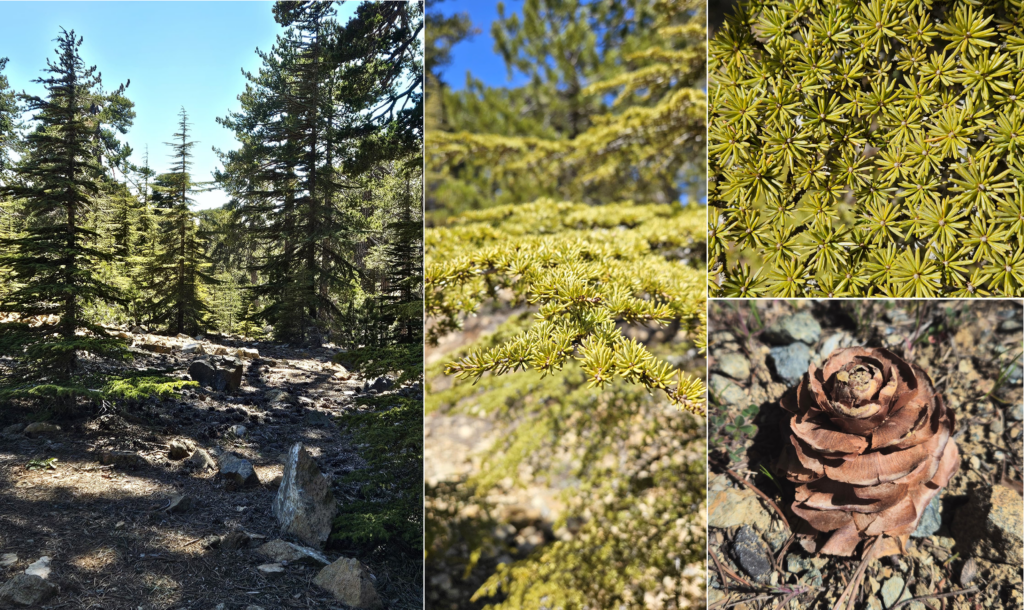
Grove of Cyprus cedar (Cedrus brevifolia). An endemic tree of the island characterized by its leaves growing in brachyblasts that are much shorter than its other relatives. However, it is often considered as a subspecies of the Lebanon cedar (Cedrus libanii).
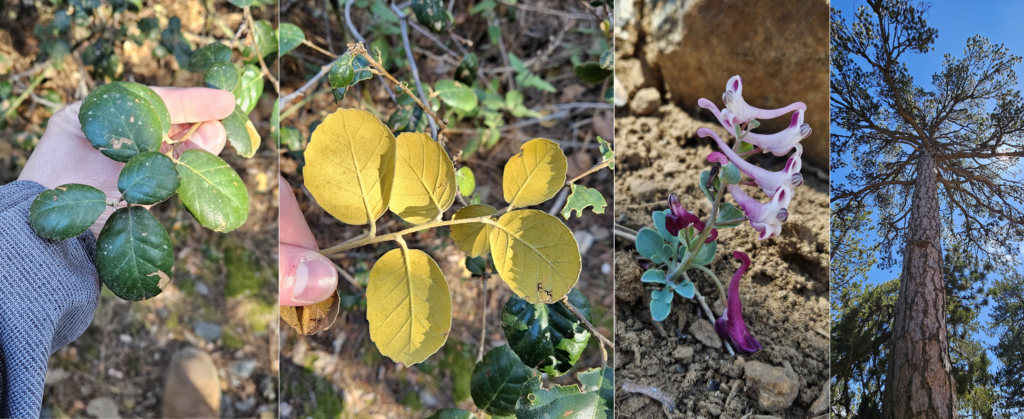
From left ot right: the leaves of Quercus alnifolia showing the golden hairs of the underside of the leaf that gives its name “golden oak”, the Cyprus fumewort (Corydalis rutifolia) in full bloom and the eastern black pinetree (Pinus nigra subsp. pallasiana) with an erect trunk and a flattened and depressed bole resembling a parasol.
This area contrasted with the tourism-focused southern coast of the country, where the beaches and most of the coastline have been modified to build summer resorts and other facilities at the cost of eliminating much of the island’s native biodiversity. This view was accentuated by the fact that almost all of the coastal flora in these areas is allochthonous, with a preponderance of species such as long-leaved acacia (Acacia longifolia), eucalyptus (Eucalyptus spp.), the hottentot fig (Carpobrotus spp.), the African boxthorn (Lycium ferocissimum) and several ficus species (Ficus spp.)
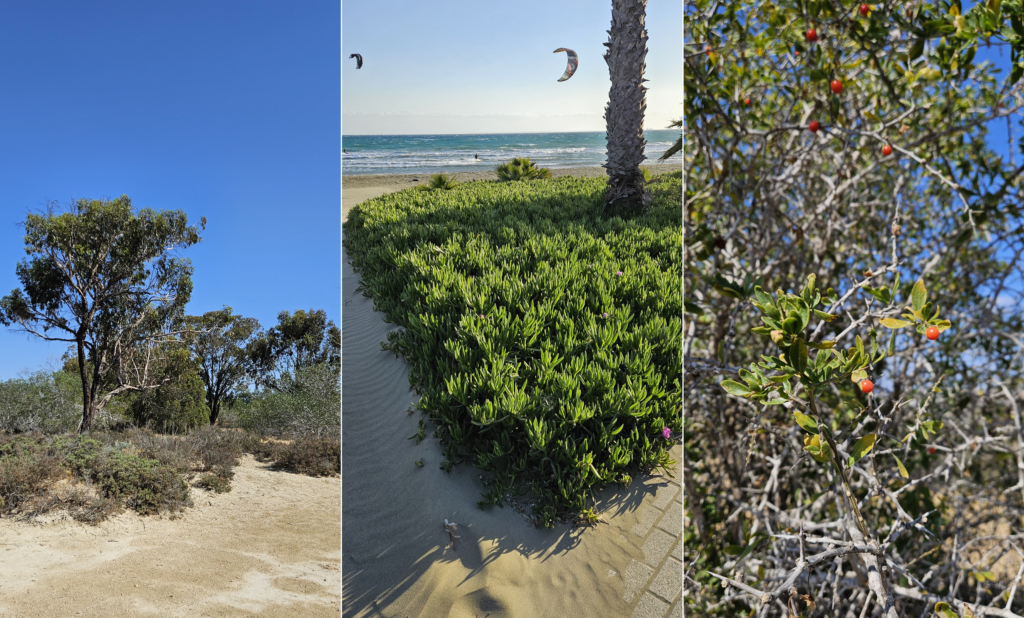
From left to right; adult specimens of eucalyptus (Eucalyptus sp.) by the coast and exposed to the salty soil, hottentot fig carpet (Carpobrotus spp.) growing on a sand dune by the sea and an African boxthorn bush (Lycium ferocissimum) with its showy red fruits that are spread by birds.
Although it is not the entire coastline, this situation gives a glimpse of the different types of management and conservation in countries with a climate like ours and how the allochthonous invasive plants are important to manage not only at a regional level but also globally. One of the reflections we brought back was that there is still a lot of work to do to raise people awareness.
Text and photos: Edgard Mestre
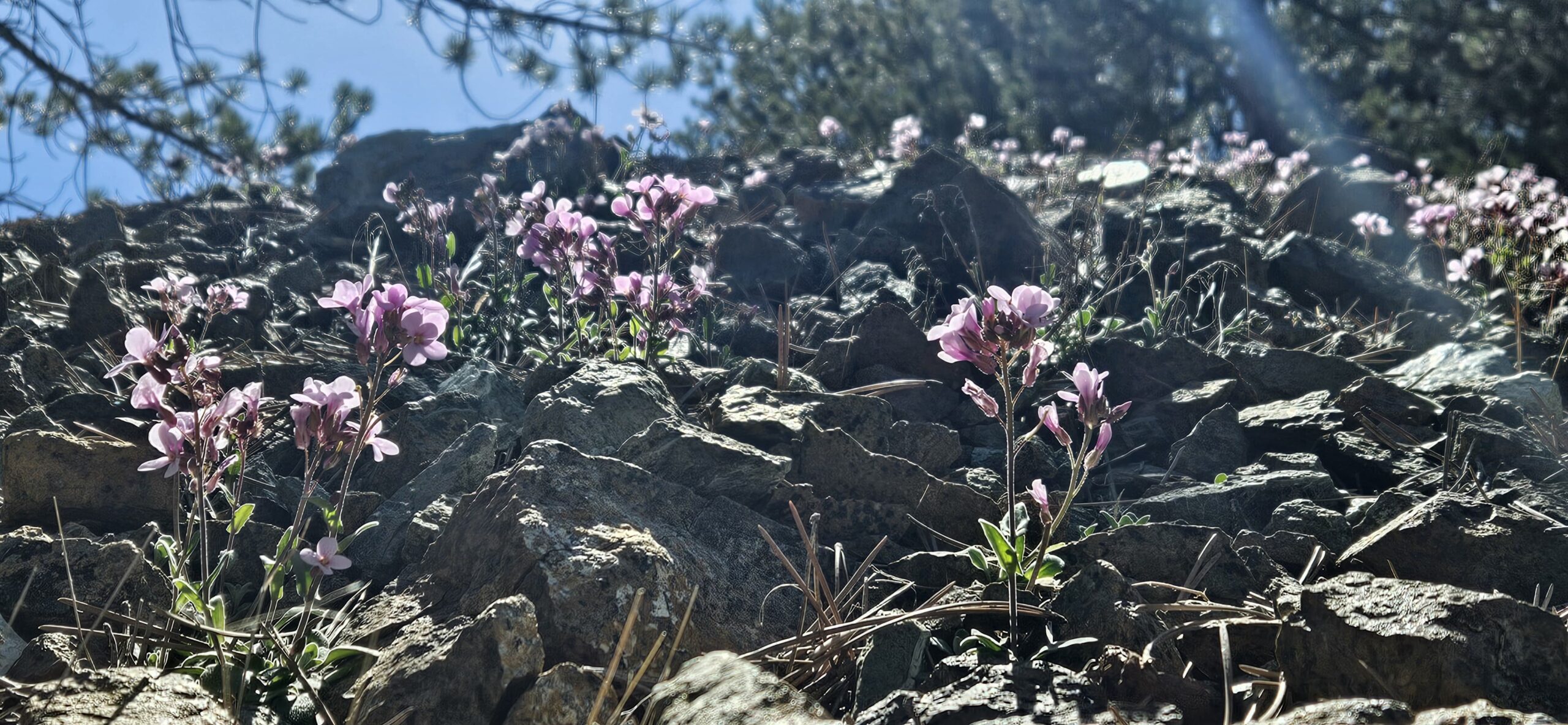
Pile of accumulated rocks in a Cedrus brevifolia and Pinus nigra subsp. pallasiana forest in Troodos with many Arabis purpurea plants, a Brassicaceae plant endemic to this region in Cyprus.




